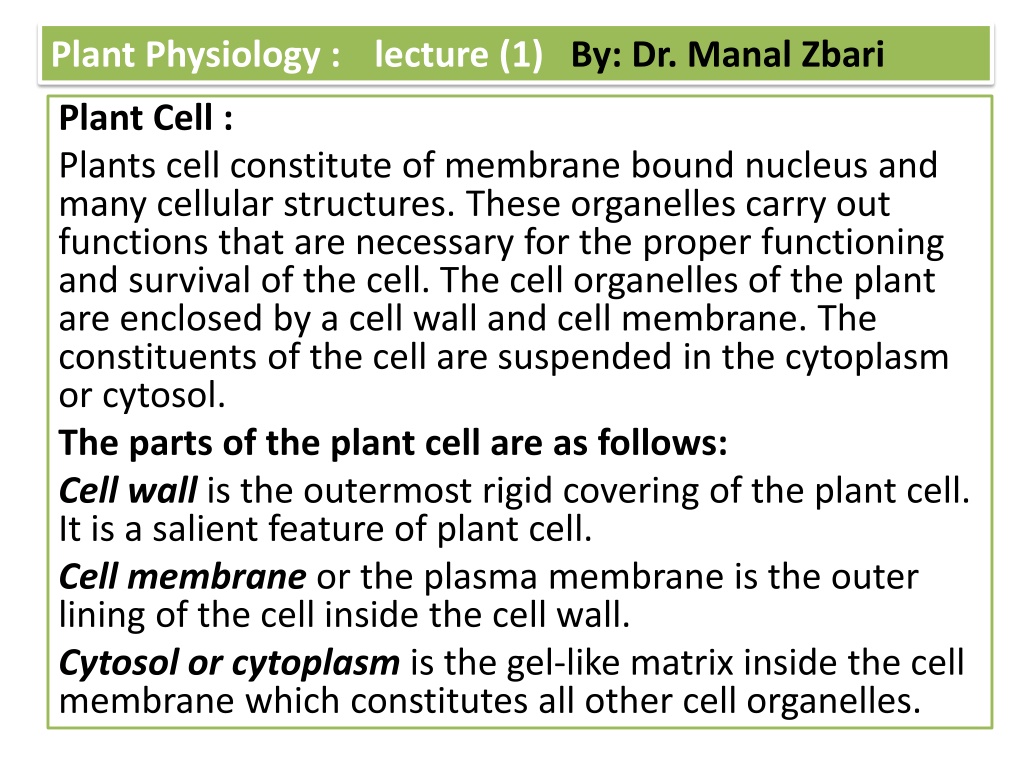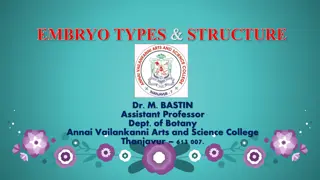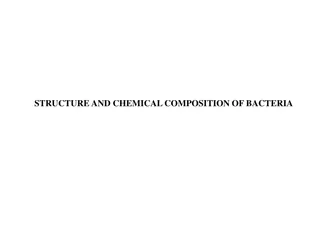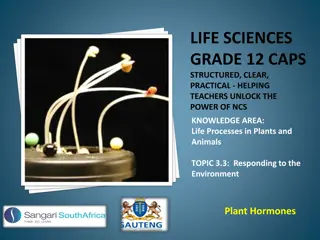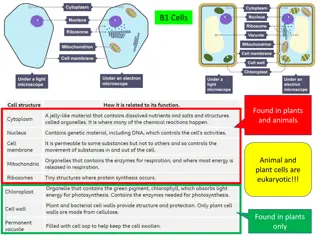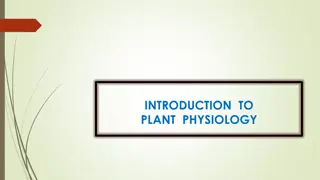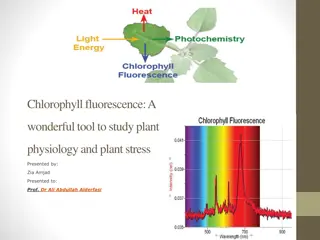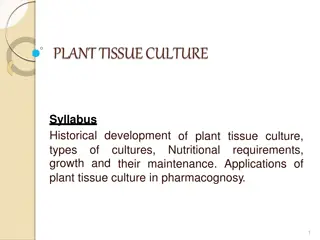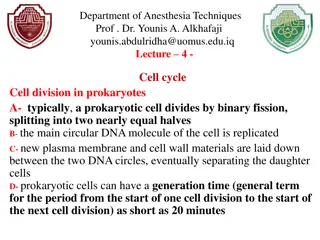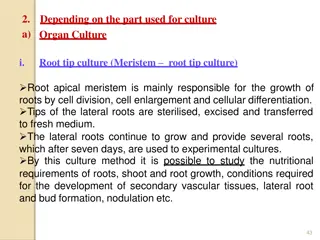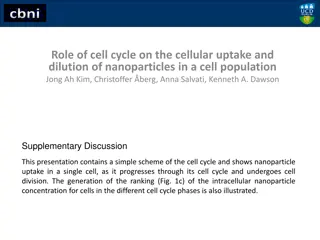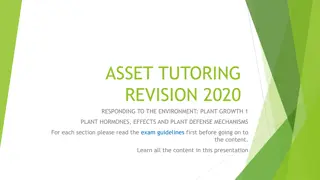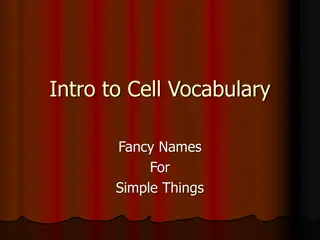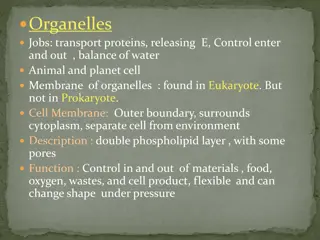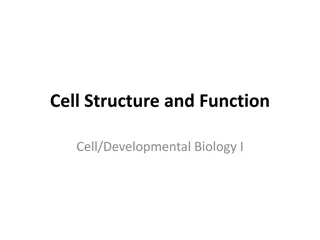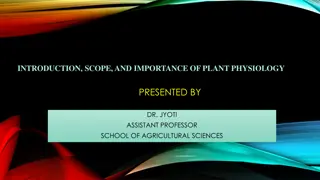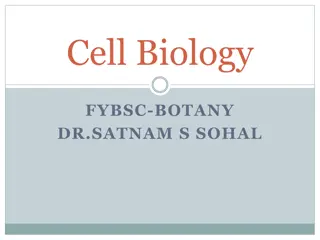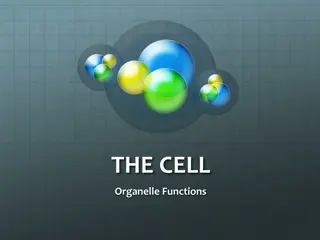Plant Cell Physiology and Functions
Plant cells are the fundamental units of life in the Plantae kingdom, comprising various organelles like the nucleus, chloroplasts, and mitochondria. These cells perform essential functions such as photosynthesis, cellular respiration, and storage. Differentiated by their unique cell walls, chloroplasts, and central vacuole, plant cells play a crucial role in sustaining plant life through specialized cell types like parenchyma, collenchyma, and sclerenchyma.
Download Presentation

Please find below an Image/Link to download the presentation.
The content on the website is provided AS IS for your information and personal use only. It may not be sold, licensed, or shared on other websites without obtaining consent from the author. Download presentation by click this link. If you encounter any issues during the download, it is possible that the publisher has removed the file from their server.
E N D
Presentation Transcript
Plant Physiology : lecture (1) By: Dr. Manal Zbari Plant Cell : Plants cell constitute of membrane bound nucleus and many cellular structures. These organelles carry out functions that are necessary for the proper functioning and survival of the cell. The cell organelles of the plant are enclosed by a cell wall and cell membrane. The constituents of the cell are suspended in the cytoplasm or cytosol. The parts of the plant cell are as follows: Cell wall is the outermost rigid covering of the plant cell. It is a salient feature of plant cell. Cell membrane or the plasma membrane is the outer lining of the cell inside the cell wall. Cytosol or cytoplasm is the gel-like matrix inside the cell membrane which constitutes all other cell organelles.
Nucleus is the control center of the cell. It is a membrane bound structure which contains the hereditary material of the cell - the DNA Chloroplast is a plastid with green pigment chlorophyll. It traps light energy and converts it to chemical energy by the process of photosynthesis. Mitochondria carries out cellular respiration and provides energy to the cells. Vacuoles are the temporary storage center of the cell. Golgi body is the unit where proteins are sorted and packed. Ribosomes are structures that assemble proteins. Endoplasmic reticulum are membrane covered organelles that transport materials.
Plant Cell Definition Plant cells are the basic unit of life in organisms of the kingdom Plantae. They are eukaryotic cells, which have a true nucleus along with specialized structures called organelles that carry out different functions. Animals, fungi, and protists also have eukaryotic cells, while bacteria and archaea have simpler prokaryotic cells. Plant cells are differentiated from the cells of other organisms by their cell walls, chloroplasts, and central vacuole
Functions of Plant Cells Plant cells are the basic building block of plant life, and they carry out all of the functions necessary for survival. Photosynthesis, the making of food from light energy, carbon dioxide, and water, occurs in the chloroplasts of the cell. The energy molecule adenosine triphosphate (ATP) is produced through cellular respiration in the mitochondria. There are five types of plant cells, each with different functions:
Parenchyma cells are the majority of cells in a plant. They are found in leaves and carry out photosynthesis and cellular respiration, along with other metabolic processes. They also plant wound repair. Collenchyma cells provide support to growing parts of a plant. They are elongated, have thick cell walls, and can grow and change shape as a plant grows. Sclerenchyma cells are hard cells that are the main supporting cells in the areas of a plant that have ceased growing. Sclerenchyma cells are dead and have very thick cell walls..
Xylem cells transport mostly water and a few nutrients throughout a plant, from the roots to the stem and leaves. Phloem cells transport nutrients made during photosynthesis to all parts of a plant. They transport sap, which is a watery solution high in sugars
Plant Cell Structure Anatomy of the Plant Cell
The plant cell has many different parts. Each part of the cell has a specialized function. These structures are called organelles. This diagram shows the various parts of a plant cell. Specialized structures in plant cells include chloroplasts, a large vacuole, and the cell wall. Chloroplasts Chloroplasts are found only in plant and algae cells. These organelles carry out the process of photosynthesis, which turns water, carbon dioxide, and light energy into nutrients. They are oval-shaped and have two membranes: an outer membrane, which forms the external surface of the chloroplast, and an inner membrane that lies just beneath. Between the outer and inner membrane is a thin intermembrane space about 10-20 nanometers wide. Within the other membrane, there is another space called the stroma
which is where chloroplasts are contained. Chloroplasts themselves contain many flattened disks called thylakoids, and these have a high concentration of chlorophyll and carotenoids, which capture light energy. The molecule chlorophyll also gives plants their green color. Thylakoids are stacked on top of one another in vascular plants in stacks called grana.
Vacuoles Plant cells are unique in that they have a large central vacuole. A vacuole is a small sphere of membrane within the cell that can contain fluid, ions, and other molecules. Vacuoles are basically large vesicles. They can be found in the cells of many different organisms, but plant cells characteristically have a large vacuole that can take up anywhere from 30-80 percent of the cell.
The central vacuole of a plant cell helps maintain its turgor pressure, which is the pressure of the contents of the cell pushing against the cell wall. A plant thrives best when its cells have high turgidity, and this occurs when the central vacuole is full of water. If turgor pressure in the plants decreases, the plants begin to wilt. Plant cells fare best in hypotonic solutions, where there is more water in the environment than in the cell; under these conditions, water rushes into the cell by osmosis, and turgidity is high. Animal cells, on the other hand, can lyse if too much water rushes in; they fare better in isotonic solutions, where the concentration of solutes in the cell and in the environment is equal and net movement of water in and out of the cell is the same.
Cell Wall The cell wall is a tough layer found on the outside of the plant cell that gives it strength and also maintains high turgidity. In plants, the cell wall contains mainly cellulose, along with other molecules like hemicellulose, pectin, and liginins. The composition of the plant cell wall differentiates it from the cell walls of other organisms. For example, fungi cell walls contain chitin, and bacterial cell walls contain peptidoglycan, and these substances are not found in plants. A main difference between plant and animal cells is that plant cells have a cell wall while animal cells do not. Plant cells have a primary cell wall, which is a flexible layer formed on the outside of a growing plant cell, and a secondary cell wall, a tough, thick layer formed inside the primary plant cell wall when the cell is mature.
Plant Cell Wall Structure The plant cell wall is multi-layered and consists of up to three sections. From the outermost layer of the cell wall, these layers are identified as the middle lamella, primary cell wall, and secondary cell wall. While all plant cells have a middle lamella and primary cell wall, not all have a secondary cell wall.
Middle lamella - outer cell wall layer that contains polysaccharides called pectins. Pectins aid in cell adhesion by helping the cell walls of adjacent cells to bind to one another. Primary cell wall - layer formed between the middle lamella and plasma membrane in growing plant cells. It is primarily composed of cellulose microfibrils contained within a gel-like matrix of hemicellulose fibers and pectin polysaccharides. The primary cell wall provides the strength and flexibility needed to allow for cell growth. Secondary cell wall - layer formed between the primary cell wall and plasma membrane in some plant cells. Once the primary cell wall has stopped dividing and growing, it may thicken to form a secondary cell wall. This rigid layer strengthens and supports the cell. In addition to cellulose and hemicellulose, some secondary cell walls contain lignin. Lignin strengthens the cell wall and aids in water conductivity in plant vascular tissue cells.
Plant Cell Wall Function A major role of the cell wall is to form a framework for the cell to prevent over expansion. Cellulose fibers, structural proteins, and other polysaccharides help to maintain the shape and form of the cell. Additional functions of the cell wall include:
Other Organelles Plant cells have many other organelles that are essentially the same as organelles in other types of eukaryotic cells, such as animal cells. The nucleus contains a cell s deoxyribonucleic acid (DNA), its genetic material. DNA contains instructions for making proteins, which controls all of the body s activities. The nucleus also regulates the growth and division of the cell. Proteins are synthesized in ribosomes, modified in the endoplasmic reticulum, and folded, sorted, and packaged into vesicles in the Golgi apparatus. Mitochondria are also found in plant cells. They produce ATP through cellular respiration. Photosynthesis in the chloroplasts provides the nutrients that mitochondria break down for use in cellular respiration.
Cell (Plasma) Membrane - surrounds the cytoplasm of a cell, enclosing its contents. Cell Wall - outer covering of the cell that protects the plant cell and gives it shape. Centrioles - organize the assembly of microtubules during cell division. Chloroplasts - the sites of photosynthesis in a plant cell. Cytoplasm - gel-like substance within the cell membrane composed. Cytoskeleton - a network of fibers throughout the cytoplasm. Endoplasmic Reticulum - extensive network of membranes composed of both regions with ribosomes (rough ER) and regions without ribosomes (smooth ER). Golgi Complex - responsible for manufacturing, storing and shipping certain cellular products.
Lysosomes - sacs of enzymes that digest cellular macromolecules. Microtubules - hollow rods that function primarily to help support and shape the cell. Mitochondria - generate energy for the cell through respiration. Nucleus - membrane bound structure that contains the cell's hereditary information. Nucleolus - structure within the nucleus that helps in the synthesis of ribosomes. Nucleopore - tiny hole within the nuclear membrane that allows nucleic acids and proteins to move into and out of the nucleus. Peroxisomes - tiny structures bound by a single membrane that contain enzymes that produce hydrogen peroxide as a by-product. Plasmodesmata - pores or channels between plant cell walls that allow molecules and communication signals to pass between individual plant cells. Ribosomes - consisting of RNA and proteins, ribosomes are responsible for protein assembly. Vacuole - typically large structure in a plant cell that provides support and participates in a variety of cellular functions including storage, detoxification, protection, and growth.
The cell nucleus is a membrane bound structure that contains the cell's hereditary information and controls the cell's growth and reproduction. It is the command center of a eukaryotic cell and is commonly the most prominent organelle in a cell.
The Nucleolus Contained within the nucleus is a dense, membrane-less structure composed of RNAand proteins called the nucleolus. The nucleolus contains nucleolar organizers, which are parts of chromosomes with the genes for ribosome synthesis on them. The nucleolus helps to synthesize ribosomes by transcribing and assembling ribosomal RNA subunits. These subunits join together to form a ribosome during protein synthesis. Protein Synthesis The nucleus regulates the synthesis of proteins in the cytoplasm through the use of messenger RNA (mRNA). Messenger RNA is a transcribed DNA segment that serves as a template for protein production. It is produced in the nucleus and travels to the cytoplasm through the nuclear pores of the nuclear envelope. Once in the cytoplasm, ribosomes and another RNA molecule called transfer RNA work together to translatemRNA to produce proteins.
Cytosol is the liquid contained within cells. It is mostly made of water, and also contains ions like potassium, proteins, and small molecules. Cytosol and all the organelles within it, except for the nucleus, are called the cytoplasm. The cytoskeleton is a network of filaments and tubules found throughout the cytoplasm of the cell. It has many functions; it gives the cell shape, provides strength, stabilizes tissues, anchors organelles within the cell, and has a role in cell signaling. The cell membrane, a double phospholipid layer, surrounds the entire cell.
Eukaryotic cell A relatively large cell with a true nucleus and organelles. Prokaryotic cell A relatively small cell with no true nucleus and no organelles except for ribosomes. Thylakoid A flattened disk inside the chloroplast that contains chlorophyll and is where photosynthesis takes place. Cell wall A cellulose-containing layer that surrounds a plant cell.
Quiz 1. Which of these are found in plant cells, but not in animal cells? A. Central vacuole B. Chloroplasts C. Cell wall D. All of the above .2. What molecule is mainly found in plant cell walls, but not in the cell walls of other organisms? A. Cellulose B. Chitin C. Peptidoglycan D. Phospholipids 3. Plant cells far best in _______ solutions. A. Hypertonic B. Isotonic C. Hypotonic
